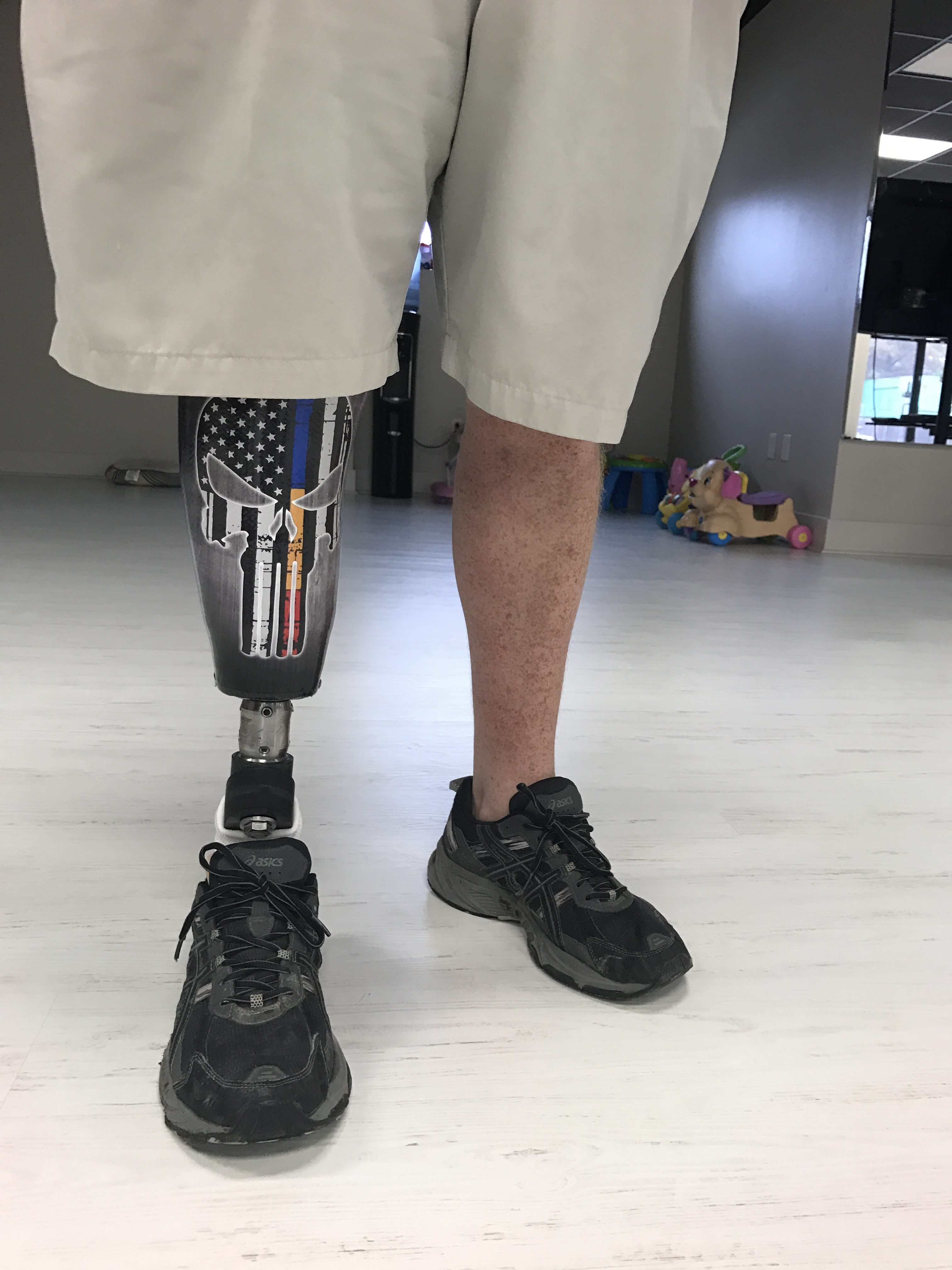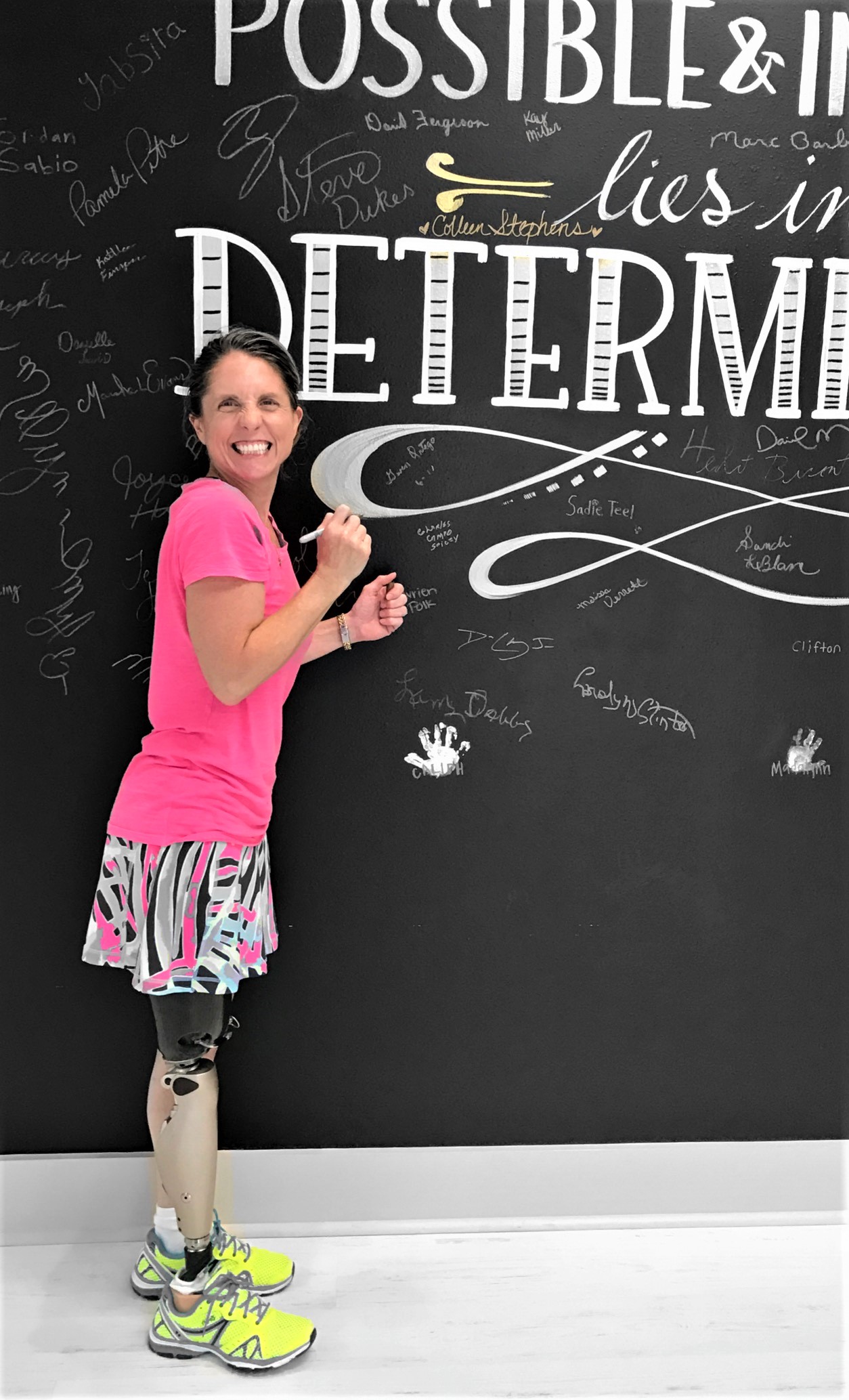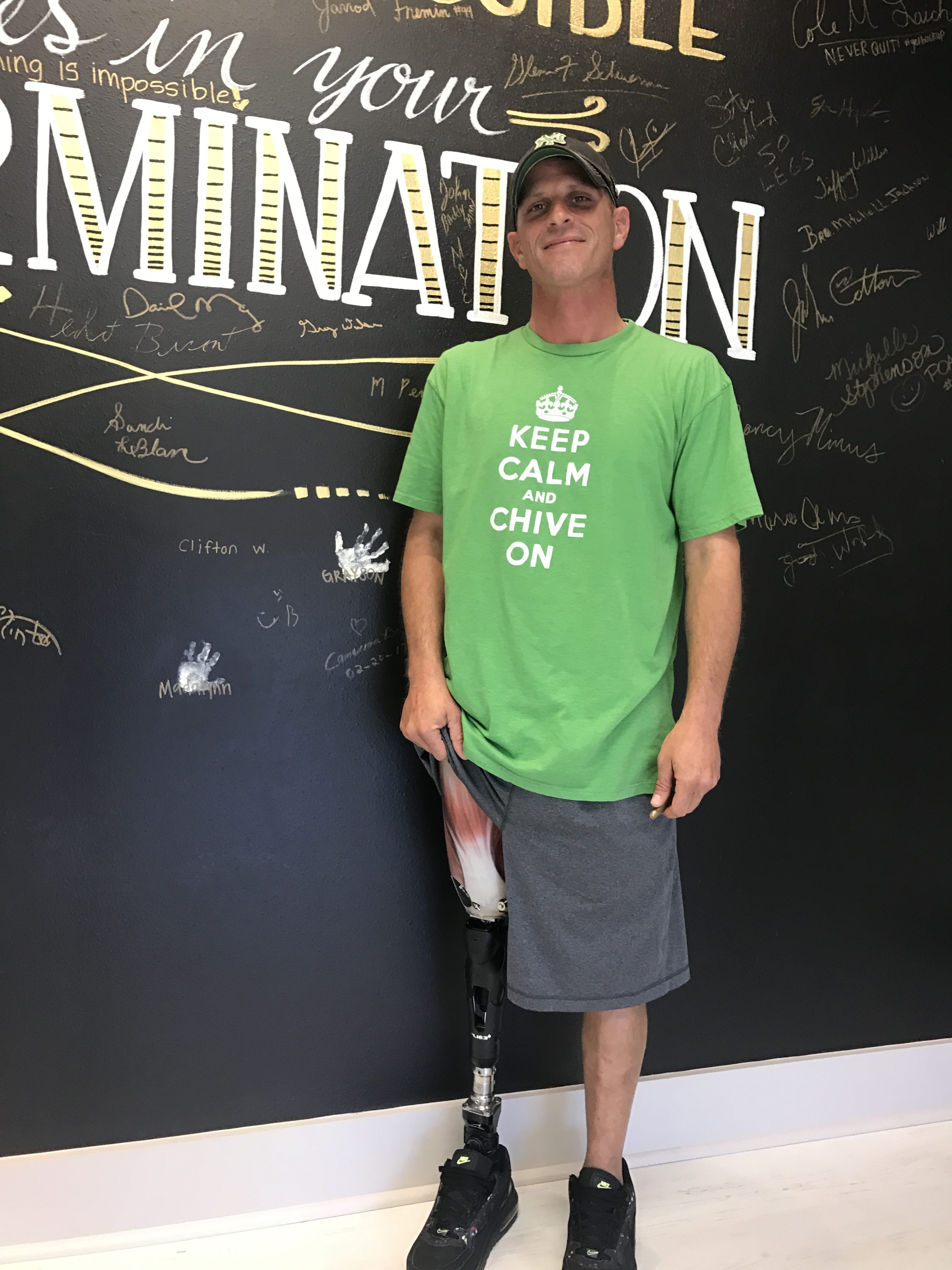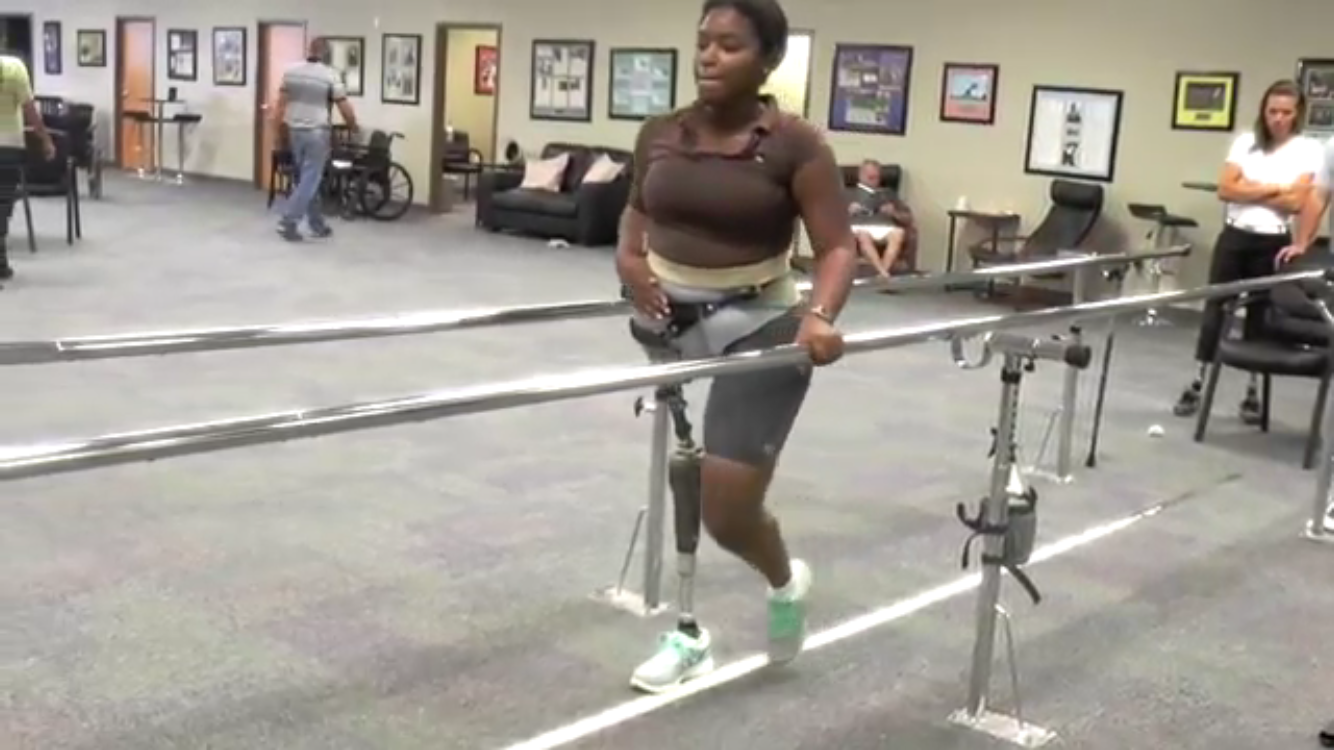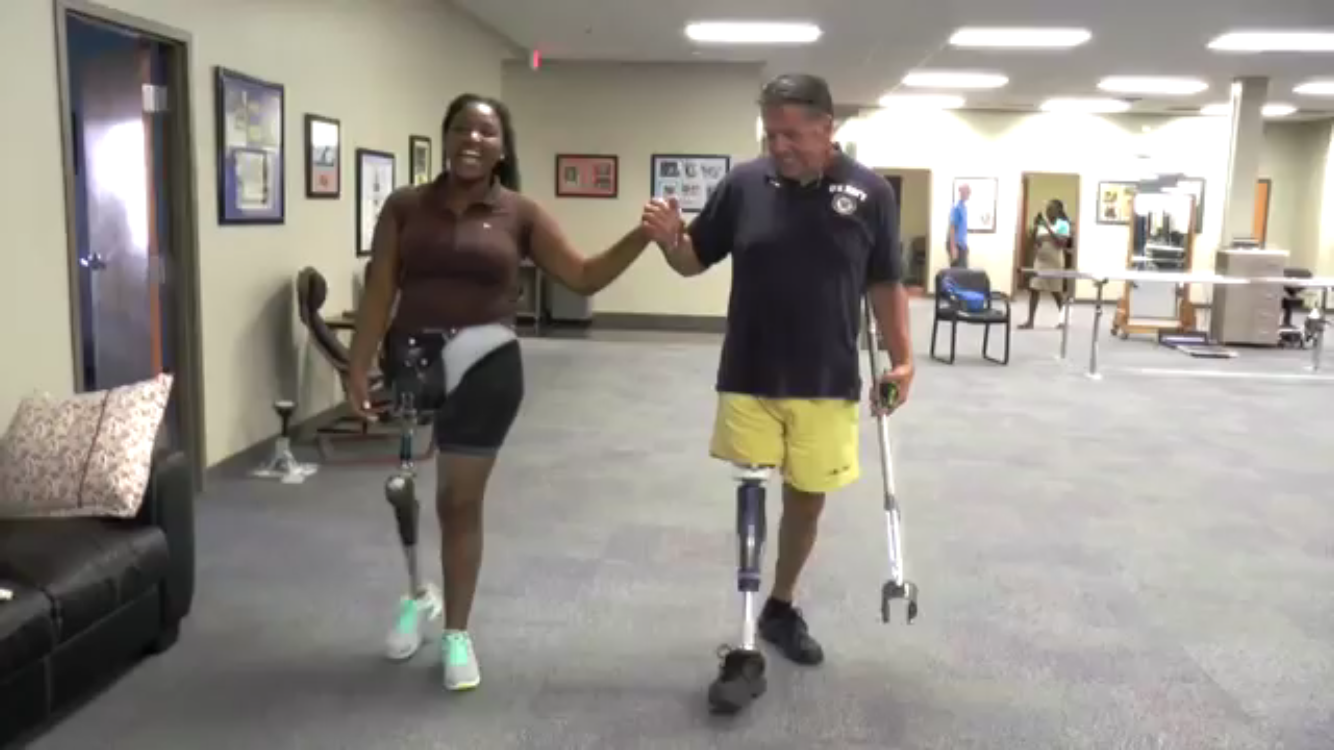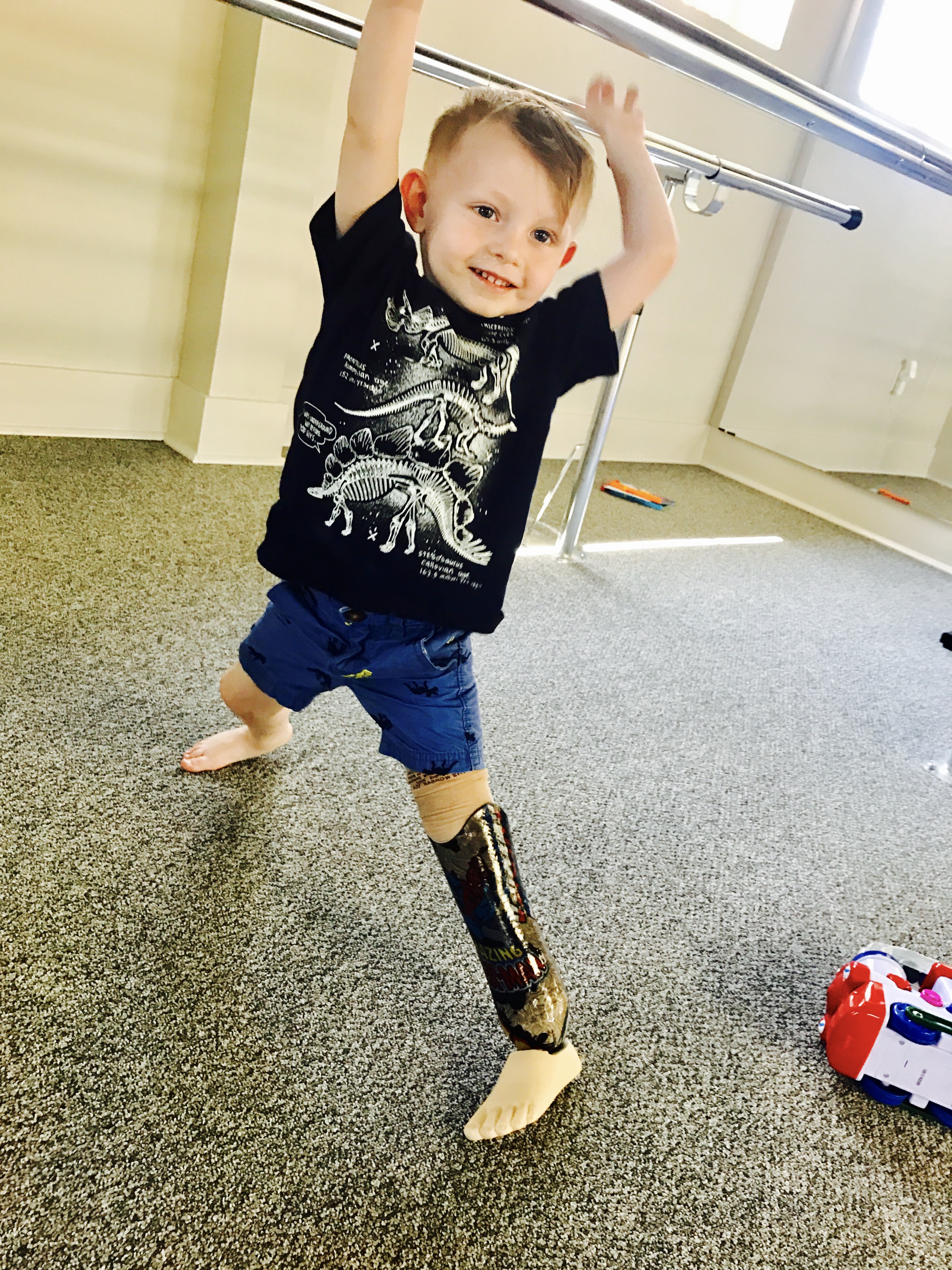At POA of Louisiana, we use the most advanced techniques known in the industry to aid in the fabrication, fitting and alignment process of a prosthesis. Our goal is to create a comfortable and optimal fitting socket that meets the individual needs of our patients. Our patients are often active members in their communities so it is a challenge and a privilege to make sure each of our prosthetic patients are living their lives at their highest quality with no or few limitations as possible.
Below Knee Prosthesis
All of our transtibial amputee patients are measured for and fit with a prosthetic liner made of medical grade silicone. These liners are fabricated on-site at the POA of Orlando office in their liner manufacturing lab.
The second component of the system is the prosthetic sock. These socks are layered on top of the liner and act as a wick between the liner and the socket. Socks also accommodate for volume changes within the residual limb.
The residual limb is then placed in the socket and air is evacuated. The socket will either contain a vacuum chamber which has been laminated into the socket, or a one-way expulsion valve, depending on the specific needs of the patient (some longer residual limbs do not require elevated vacuum). Lastly, a sealing sleeve is rolled up to seal against the liner above the socket trim lines.
Above Knee Prosthesis
The double-wall NPS socket system is designed to give amputees a transfemoral prosthesis that fits intimately and provides increased control and security. An added benefit is that the comfortable trim lines allow for a larger range of motion. A silicone liner is rolled onto the residual limb. If the limb is relatively uniform in shape, an “off the shelf” will be used. For those residual limbs with bony prominences, neuromas, etc., a custom liner will be designed. All of our medical grade silicone liners are fabricated on-site at the POA in Orlando office at their liner manufacturing lab.
The second component of the system is the prosthetic sock. These socks are layered on top of the liner and act as a wick between the liner and the socket. Socks also accommodate for volume changes within the residual limb.
Next, the inner cup is slid over the prosthetic sock. This is where the POA system is different than others. A vacuum chamber laminated into the cup will allow even pressure to be distributed over the entire residual limb. A sealing sleeve, which is attached to the inner cup, is then rolled up to seal against the liner.
Lastly, the outer socket (with the knee and foot attached) is placed over the inner cup and the two pieces are locked together with a pin. Air is removed from the socket through a vacuum tube using a pump, creating an elevated vacuum. This provides the intimate fit that results in the feeling that the prosthesis is a part of you.
Hip Disarticulation Prosthesis
After a patient is fit with a custom-made medical grade silicone liner (fabricated on-site at the POA in Orlando office at their lab) the socket is designed and formed over it, providing a precise and comfortable fit. A light-weight carbon fiber disc containing Negative Pressure Suspension (NPS) technology is inserted into a pocket formed into the silicone liner. Additional components are added and the resulting prosthesis provides the highest degree of control possible, allowing the wearer to walk with confidence and sit in comfort!
Knee Disarticulation and Symes Prostheses
The knee and ankle disarticulation prosthetic systems were designed taking into account that the amputee is able to bear weight on the end of their residual limb and the long length of the limb increases their control of the prosthesis. Therefore, less support is necessary at the top of the socket, allowing for lower trim lines than a traditional transfemoral or transtibial socket.
All of our knee and ankle disarticulate patients are measured for and fit with a prosthetic liner made of medical grade silicone. These liners are fabricated on-site at the POA in Orlando office at their liner manufacturing lab.
The second component of the system is the prosthetic sock. These socks are layered on top of the liner and act as a wick between the liner and the socket. Socks also accommodate for volume changes within the residual limb.
The residual limb is then placed in the socket and air is evacuated through a one-way expulsion valve. Lastly, a sealing sleeve is rolled up to seal against the liner above the socket trim lines.

